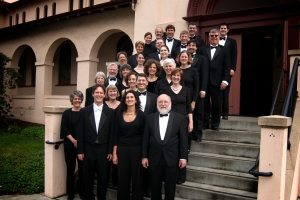
Monteverdi's madrigals are witty and melodious, and immediately expressive. Laments of the lovelorn feature prominently: the consuming passion of love (Quel augellin che canta/ The little bird who sings), unrequited love (Sfogava con le stelle/ He cried out to the stars, A un giro sol/ A single glance), leavetaking (O primavera gioventù dell anno/ O Springtime, youthful season, Ah, dolente partita/ Ah, sad parting). The remarkable sestina Lagrime d'amante al sepolcro dell'amata (Tears of the lover at the tomb of his beloved), a set of six madrigals on a single, extended poem, creates an especially powerful solemnity in Monteverdi's setting. CBS also sings the paradigmatic Monteverdi lament, Lamento d'Arianna, in its five-voice madrigal version, adapted from a solo aria in the now-lost opera L'Arianna.

The chorus' concert repertory centers on the middle range of Monteverdi's output (books 3, 4, 6, and 7), published between 1592 and 1619. "Written over a 25-year span, the madrigals we are performing reflect the various innovations that Monteverdi brought to the form," Flight observes. "The madrigals of his earlier books may bear a loose relation to the Renaissance motet, but already they are replete with bold gestures in which the meaning of a specific word is brought out strongly." Aside from their musical beauty, they're a fascinating case study in the composer's stylistic development. The madrigals are a microcosm of the transition historians now identify between Renaissance and Baroque style, and Monteverdi was squarely in the vanguard.
Typical of Monteverdi's experimental impulse is Sfogava con le stelle (He cried out to the stars), which opens with a patter-style delivery of the poem's words on a single chord, depicting the poet's sense of urgency and anguish.
Thorsett will be featured in selections from the composer's 1632 song collection Scherzi Musicali (musical jests), which showcase Monteverdi's ravishing lyricism and complex emotional drama. Rounding out the program is a touch of ballet music with Tirsi e Clori, filled with songs of infectious tunefulness.
